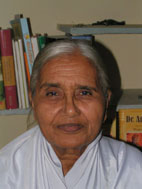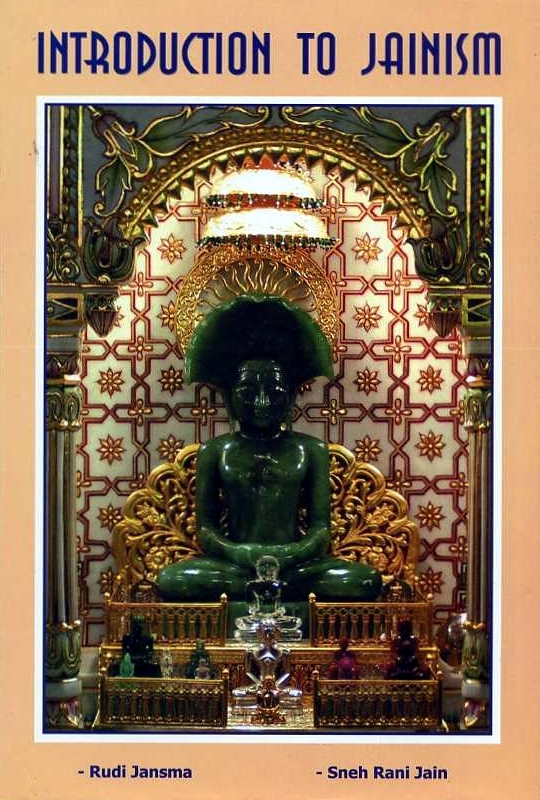This section (Book: pp. 49 - 69) was written by Surendra Bothra, Jaipur, India, and is used with his kind permission. |
Nonviolence is the highest religion
Non-violence, ahimsā, is the central doctrine of Jainism. Jainism is therefore sometimes called the nonviolence religion or culture. Nonviolence also plays an important role in Hinduism, Buddhism, Christianity, Islam and other religions. However with none of them has this principle has been given such a central position as in Jainism, especially in the practice of religion. All actions Jains do are directed towards avoiding harm to other living beings. This includes physical violence, but also verbal violence, and - most important of all mental violence because that is where the cause of all misery is born. This has enormous consequences for daily life, for society and for our worldview. Through the millennia Jains have put emphasis on this principle and have thereby influenced the whole world. And they are still doing so. Basically human nature is kind, considerate and compassionate, as we can see in children and most grown-ups, and also in our anatomy and physiology, but too often we follow our beastly nature, and then become a thousand times worse that any animal can ever be.
Throughout human history this teaching of nonviolence as the first principle has covered humankind with a protective shield. Everywhere in the world there were and are individuals and groups who carry the principle of nonviolence in their hearts, because they feel that this is what the world needs most, and lacks most. Vegetarianism, too, is supported by numerous individuals in every country. Later interpretations of Hinduism, but not the original Hinduism of the Vedas, prescribed ritual animal sacrifices, but thanks to Jainism, Buddhism and Christianity such things occur only rarely today, except in Islam, certain Hindu sects and some tribal religions. Animal sacrifices did and do occur over the entire globe. Some cultures even took to large-scale human sacrifice. And - so they thought - by commission of the gods! But this is compassion turned into cruelty - how could any real god ever approve of such action? In Jain cosmology many classes of celestial beings or "gods" are described, and far from all these "gods" are good. They have been humans when incarnate on earth, and may have all the evil or noble qualities of humans. Some of them may be kind and helpful, some highly spiritual, but others may be cruel or purposely misguide people, causing accidents or worse: they may induce ignorant, self-interested worldly people to do evil things while being convinced they are pleasing the real gods or God. For example, the Mayas of Mexico and Guatemala, who in later more decadent phases of their culture performed human sacrifices on an ever larger scale (and even today animal sacrifices sometimes occur), were themselves aware that they had been misled by "second-rate" gods, and they expressed their regret in songs in their sacred book the Popol Vuh.
The wish not to harm living beings (including, but in the last place, oneself) is an essential characteristic of the deepest inner being of man. That is why religions which preach this doctrine have always found many sympathizers. No great mental effort is needed to understand how much suffering the human as well as the animal kingdom would have been spared if humans had the discipline to let this noble aspect of their being prevail at each and every opportunity. No wars, no slaughterhouses, no battery cages, terrorism, suppression, social injustice, or capital punishment would exist any longer once humankind understands and then practice non-violence. It would not mean that humanity would have nothing to learn anymore or would be freed from all despair, or that tigers would suddenly eat grass. But at present we make things much more difficult for ourselves than is necessary. Instead of regarding each other as territorial and personal competitors, people would understand that they are brother pilgrims on the path to truth and unstained happiness, who know that the pilgrimage is long and often hard, but who everywhere and always are on each other's side. For many people this is already the case even in our times. It sounds almost sentimental - "unpractical" - yet this is the only thing of real importance in life, the only true discipline around which life revolves: the practice of brotherhood. The brotherhood of all beings which have consciousness. Rules are not necessary to accomplish this, but listening to one's heart certainly is.
Religions teach that every consciousness reaps what it has sown. From this it follows that "violence one cannot avoid" such as natural disasters, disease and damage inflicted by someone else, can be referred back to oneself - the neglect of this deep impulse from the heart. We should recognize that our repeated existences on earth are but a small part or our total life cycle. Most of our time we spend outside our physical bodies in the hereafter or the "herebefore" either as hellish or as heavenly beings, say the Jains. The so-called hells or heavens are states of consciousness, which are the result of our thinking during our stay in physical bodies. As a result of its weakness or attachment the soul is not willing to make choices, and oscillates continuously between high and low, good and bad. In this way a vibration is created through which confusion and ignorance are attracted and attached to the soul, thus making matters still more difficult. If one has the courage to choose the higher - absolute inner nonviolence - the weakness and doubt causing the vibrations disappear. Then God will turn out to be all forgiveness and love, as a Christian might express it. The soul is the only true god according to Jainism. By living in the soul, every human can become a god.
What makes the Jains especially noteworthy is that they not only preach and talk about non-violence, but also practice it. I happened to come across a small diagram from 1891 - that is, from before the influence of modern times -giving the percentage of prisoners in India as related to religion. The Jains were by far the best: 1 in 6165 citizens. On the other side of the scale, the figures for Jews and Christians were 1 in 481 and 477 respectively. The attitude of the Jains is neither extreme nor extravagant. In fact they are the ones who behave "normally." The social morality of the Jains as well as their doctrine of redemption is interspersed with rules and guidelines, which are all derived from this same principle of ahimsā. The five main vows, which every Jain is supposed to respect, are: to abstain from violence, to abstain from lying (i.e.: violence against truth), to abstain from stealing, to abstain from sexual misconduct, and to be free from worldly attachment. In addition, every Jain is supposed to think and meditate about friendship with all living beings, the happiness it may give when seeing that others have more success than oneself (especially in spiritual matters), compassion for all suffering beings, and tolerance or indifference towards those who behave in an uncivil or negative way towards oneself.
Ahimsā is the opposite of himsā, violence. What is meant by violence is clearly defined in scriptures, which the Jains regard as authoritative. To quote just a few:
From the Tattvārthadhigama Sūtra:
Violence (himsā) is to hurt the prānas (vitalities) through vibration due to the passions, which agitate mind, body or speech (vii: 13).
From the Purusharthāsiddhi-upāya:
Any injury to the material or conscious vitalities caused by passionate activity of mind, body or speech is certainly called violence (iv: 43); certainly the non-appearance of attachment and other passions is ahimsā (iv: 44).
From the Āchārānga Sūtra:
Violence is a great impediment to spiritual awakening, and someone who indulges in doing harm to living beings will not get enlightenment; harming other beings is always harmful and injurious to oneself - it is the main cause of someone's non-enlightenment (i.1.2).
From the Sūtrakritānga Sūtra:
Knowing that all evils and sorrows arise from injury to living beings, and that it leads to unending enmity and is the root cause of great fear, a wise man who has become awakened should refrain from all sinful activities (i.10.21).
From the Uttarādhyayana Sūtra:
Seeing that everything that happens to somebody affects him personally, one should be friendly towards all beings; being completely free from fear and hatred, one should never injure any living being (6.6).
From the Daśavaikālika Sūtra:
All living creatures desire to live. Nobody wishes to die. And hence it is that the Jain monks avoid the terrible sin of injury to living beings.
The most forceful statement is found in the Jñānārnava:
Violence alone is the gateway to the miserable state, it is also the ocean of sin; it is itself a terrible hell and is surely the densest darkness (8.19);
and:
If a person is accustomed to commit injury, than all his virtues like selflessness, greatness, desirelessness, penance, liberality or munificence are worthless (viii:20).
 Dr. Sneh Rani Jain
Dr. Sneh Rani Jain
 Publisher:
Publisher: